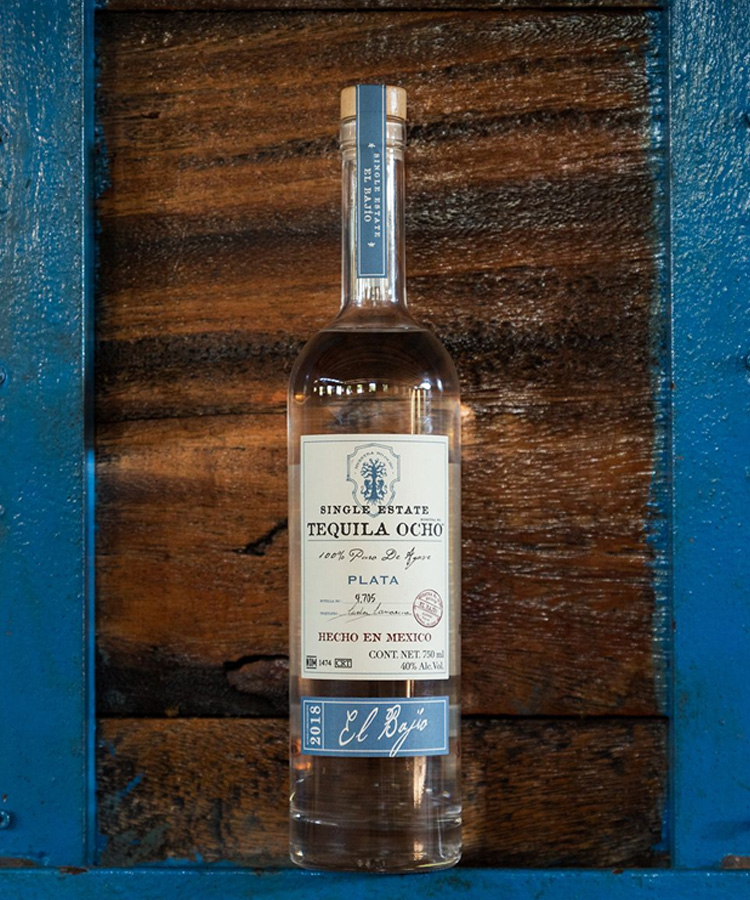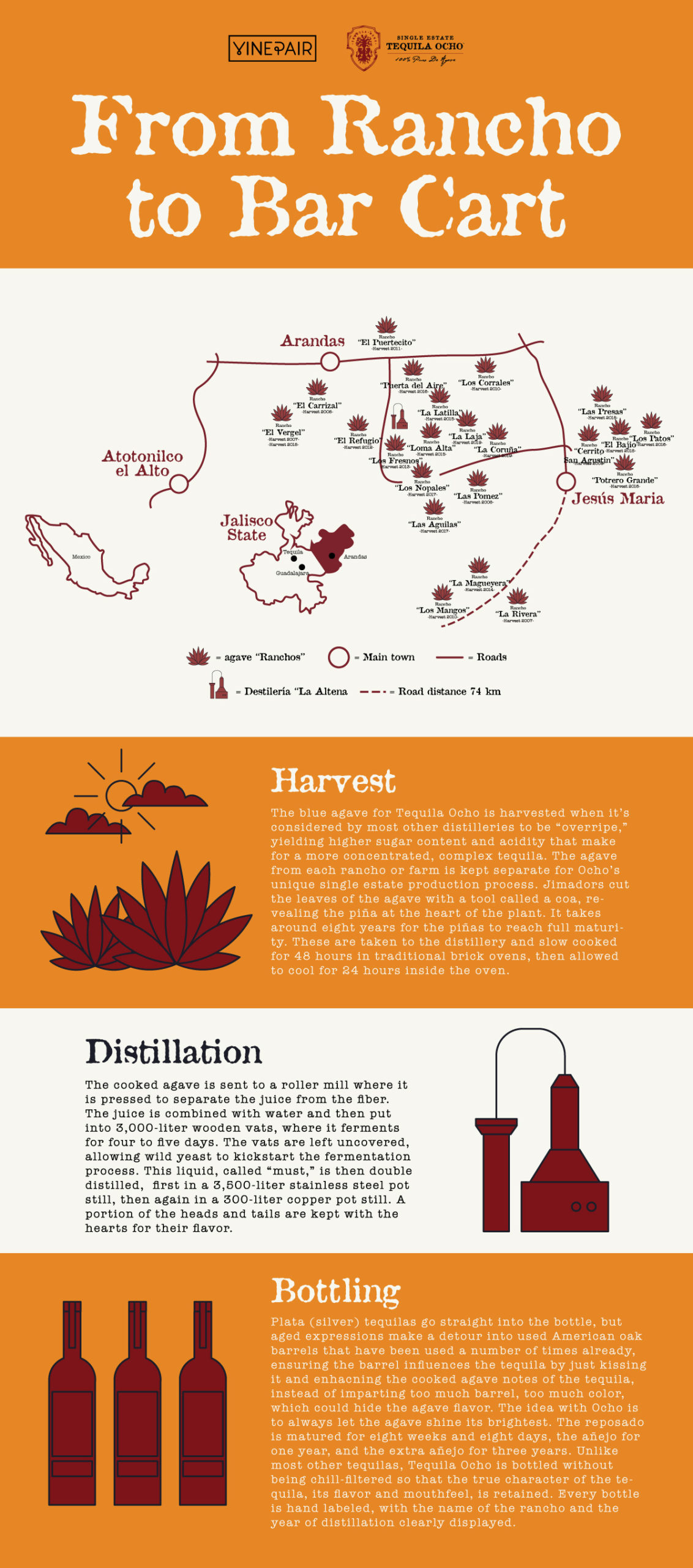
By now, we’re all familiar with the concept of terroir when it comes to wine, but recently the conversation has moved into the world of spirits, as well, particularly when it comes to tequila. Though only blue agave can be used to make tequila, there is so much variation that occurs in the plant depending on the region where it’s grown, its climate and weather, and the composition of its soil. Which is to say, terroir can play a significant role in a tequila’s character, perhaps more so than any other spirit.
Since its inception 12 years ago, Tequila Ocho has been proving that terroir does indeed affect the flavor and quality of tequila by taking a hyperlocal approach — that is, bottling tequilas from single agave farms, a.k.a. ranchos. Each release is also bottled as a particular vintage, highlighting the natural variations that can occur from year to year (and even rancho to rancho), another well-established concept from the wine world.
“Demonstrating the existence of terroir in tequila was one of the main goals that co-founders Tomas Estes and Carlos Camarena endeavored to achieve,” says brand ambassador Jesse Estes.
The blue agave plant takes an average eight years to fully mature before being harvested, a long time to be exposed to the specific conditions, including the climate, elevation, drainage, and soil of a particular field. During this time the agave’s roots are soaking up the minerals and nutrients in the earth, “and storing them in their piñas, the heart of the plant that is used for tequila production,” says Estes.
Most tequilas are made from a blend of agaves sourced from many different farms and areas, predominantly within Mexico’s Jalisco, which means that the unique attributes of a specific place are lost in the mix. “Having control over our entire process is key to creating the best possible tequila, and that process starts in the fields,” says Estes. These fields, all owned by the Camarena family, are in the “Golden Triangle” of Los Altos de Jalisco, an area that is considered to be one of the best regions for growing blue agave. Sustainability is a key component of the family’s farming practices, including not using any chemical pesticides or herbicides on the plants.
Tequila Ocho celebrates the natural variations that occur in different fields by producing single- estate tequila, similar to a single-vineyard wine. In the same way, Ocho labels each batch with the year of production and specific field from which the agave was sourced. The goal is to show that terroir is intrinsic to a tequila’s flavor, even after the many steps that occur along the path from field to bottle — cooking, milling, fermentation, distillation, and maturation. Estes points to two of Ocho’s fields as good examples of the influence of terroir: La Magueyera and El Bajío. El Bajío is at high elevation and the soil there is iron-rich, creating a fresh, fruity, and peppery plata (silver) tequila. In contrast, La Magueyera is 2,000 feet lower with soil that has less iron, resulting in a plata with more earthy and vegetal notes.
Of course, Ocho utilizes the same carefully monitored production process for all of its tequilas, no matter where the agave comes from. “Tequila Ocho is about respect: respect for these majestic plants, respect for our team, and respect for our consumers,” says Estes. And that respect shines through by allowing the agave to have a voice of sorts, and embracing the wonderful variations that nature imbues upon the plant as it slowly matures over the course of nearly a decade. One only needs to look at the brand’s motto, which sums up the ethos that is so important in creating high-quality tequila: “Start with the best agave, end with the best tequila.”
This article is sponsored by Tequila Ocho.

